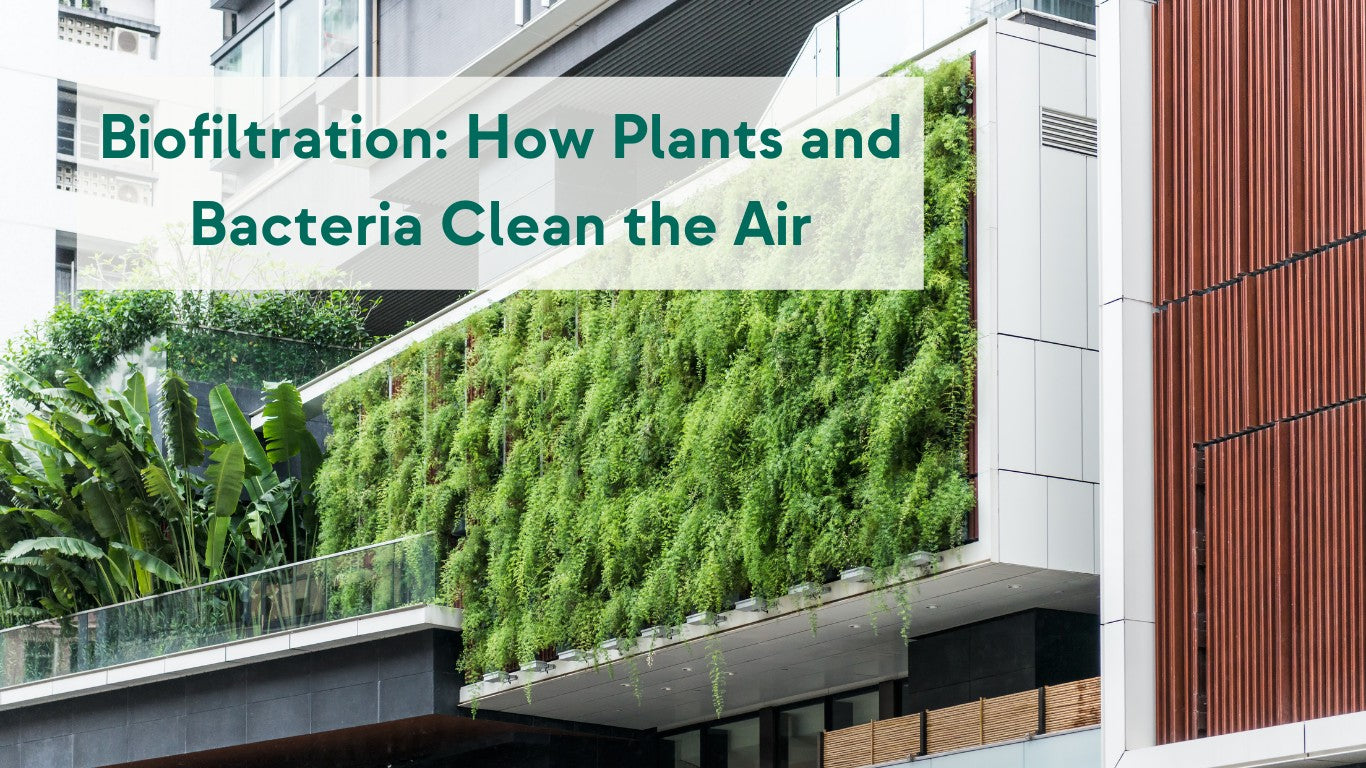
Science demonstrated how introducing alive, healthy plants, trees, and mosses to an indoor space can greatly help in reducing the concentration of air pollutants in the air. Still, it’s important to understand how plants can act as biofilters in order to maximize to benefits that come with their presence.
What is a Biofilter and what does it do?
Biofiltration refers to the natural biological process of capturing and reducing VOCs and pollution found in the air. This is usually done by drawing the contaminated air stream through some sort of biological filter - or growing medium – as well as through a plant's root system, where microorganisms and bacteria trap and break down the contaminants found in the air and water into non-toxic compounds.
Living Walls as Biofilters
A living wall biofilter is a system normally composed by a living vertical garden, some sort of water reservoir and watering system, as well as a fan for moving air through the system. While this seems like a lot, it actually is a pretty simple system that has been used for decades – albeit not “vertically” – in hydroponic farming facilities all around the World.
Plants grown hydroponically on this kind of living wall system act as an extremely low-maintenance, low-cost living air filter; capable of absorbing and removing dangerous substances and pollutants from the air with just water, light, and a bit of electricity (to keep the system running).

These systems have several benefits for the buildings that house them. On the surface, living walls provide aesthetic beauty. The biophilic element it brings means that people who live in, work at, or visit the building will naturally feel better and be more productive by being closer to nature. Circulating the air through oxygen-producing plants refreshes the air, reducing the need to ventilate the building with outside air. Bringing in less outdoor air reduces heating and cooling costs because the air is already at ambient temperatures. And last, but not least, living wall biofilters clean the air, removing both small particles and VOCs (volatile organic compounds).
The adoption of vertical biofilters or vertical moss walls in offices and residential buildings has seen a surge in popularity in the last decade, with cities like Milan and Singapore (to name a few) pioneering this kind of new, green architectural developments.
How do bacteria help in cleaning the air?
Research has proven that circulating air through a living wall biofilter removes a significant portion of the VOCs. The hidden magic that makes the whole system work is the microbiome present on the plants, specifically those in the root zone – called rhizosphere.
The aspect of VOCs that makes them "organic" is the presence of carbon. That is why the microbial community living on the roots of plants is uniquely suited to breaking them down. When the carbon is separated from the rest of the compound, it helps the plant manufacture food through photosynthesis. These specialized bacteria on the plant roots basically have the job of breaking down materials containing carbon to serve the plant as new food.
So do any houseplant work as a Biofilter?
Yes and no. All plants have the same microbial power to break down carbon-containing compounds. Unfortunately, a potted plant in your living room isn’t able to filter the air effectively enough to make an impact on your indoor air quality (IAQ). The main reason for this is an effect called boundary layer resistance, which means that potted plants have almost no air flow happening at the root level, so most of the air in the room isn’t even reaching the area where VOCs are able to be processed by the plant.

Biofilters work around these issues by
- using a fan to circulate air to the plants, and
- exposing the roots of the plants to the air by growing them hydroponically, rather than in soil.
As it stands, plants can be used to purify the air of indoor spaces, but they have to be put in the best condition to do so effectively. Which entails designing and building systems capable to house plants while maximizing their root’s exposure to airflow, thus ensuring the best possible air purification results.
A conclusive note
Biofiltration: the air purification system of the future.
Biofiltration has been used in mostly industrial settings for a while now. After years of research, the possibilities for translating this technology into our home and work environments are beginning to take shape rapidly. Building on the groundbreaking research by NASA and renown international Universities, we designed a home-scale biofilter: Koru. Our hope is that more companies and institutions globally join the hundreds that have already shown their interest and support towards the exploration and adoption of these kind of new, nature-based technologies which could help to solve greatest problems of our time: air pollution, climate change, and mental health.

Share:
Biophilia and the Benefits of Blending Design with Nature
How Nature can Boost our Health and Performance